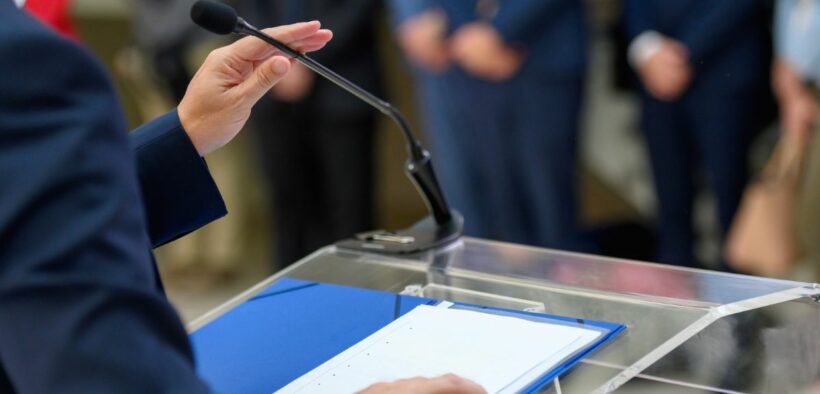Welcome to Happenings on the Hill – Happenings on the Hill is a fortnightly column specifically for the Third Sector by government engagement expert Neil Pharaoh, Director & Co-Founder of Tanck.
With winter recess almost upon us, and Federal Parliamentarians preparing for their electorate return after the budget, another key highlight of the political season begins – typically the National Conference (Labor) and Federal Council (Liberal) all meet across these winter months.
So, what is the National Conference or Federal Council and why is it relevant or important to me? Several years ago, the team at Tanck and I developed a categorisation of five different stakeholders when engaging with government – we found, based on our research, that if you engaged successfully with all five, you were more likely to secure policy, funding, and legislative outcomes. Those categories are Minister & Executive, Members & Senators, Policy Department, Central Agencies and the Political Party themselves. Time and time again, this last category was forgotten, which is why conference and council season is key.
Political parties themselves are an integral part of government engagement—both parties (with different names and titles) have a variety of policy committees, processes and procedures about not just how the party operates, and how MPs are selected, but also around their views, policy or platform, or position on several key issues.
On the Labor side of the fence, these policies and positions are binding on all members, from your rank and file in regional Australia, to your party leader or Prime Minister. The binding nature on the Labor sides makes the national conference, which is held every three years, a major event. If you can’t convince via an election or parliamentarians, conference (or Council on the Liberal side) is a critical opportunity to shift the dial.
On the Liberal side, Federal Council is made up of 14 delegates from each State and Territory, plus the Federal Parliamentary Leaders and Federal Office Bearers (President etc) who are responsible for the constitution of the party, as well as the Federal Platform. The State divisions of the Liberal Party replicate similar models for each State and Territory – and given where we are in the election cycle, close attention should be paid to NT, ACT and QLD, all of whom have elections in the back half of next year.
On the Labor side, National Conference occurs every three years, and has 400 delegates from across Australia. Half of those delegates (200) are elected by Unions, their allocation based around the relative size of each affiliated union compared to others. The remainder are elected by rank-and-file members of the party, along with a number of State, Territory and Federal delegates who are attached to positions – such as State, Territory or Federal leader. Labor also has a state and territory equivalent, which broadly follows the same processes as the Federal National Conference.
Outside of the conference process there are a number of other ways to engage with each party – the Liberal Party has advisory committees on Federal policy, as well as Women’s, Young Liberal and Regional and Rural Committees. Labor on the other hand has a number of State and Federal policy committees, to which members can nominate and be elected to.
Both parties also have a number of affiliated organisations – Labor’s include things like Rainbow Labor, Labor Environment Action Network (LEAN), Labor Enabled (Disability network), as well as Labor for Refugees, Labor Women’s Network, EMILY’s list (which is short for Early Money is Like Yeast – reflective of its start as a funding vehicle for women to enter politics). The Liberal Party has some similar groupings, although now always as formalised – these include Hilmas Network (For Liberal Women) and many others.
Above and beyond the formal structure of each party, is also the local branches, Labor has approximately 60,000 members across Australia, with the Liberal Party claiming a larger membership of between 70-80k. Each of these engage locally with the community, from street stalls, to handing out on election day, to engagement with a local MP.
On the Liberal Party there is a very strong preselection culture, and many candidates are chosen with input from local branch members. Labor is theoretically the same, although in the 20 years of my party membership, I have only voted once in a preselection process – as there always seems to be an excuse to remove the say of local members for one reason or another on the Labor side of the fence.
Local branches of either major party are also a way you can discuss ideas, local issues, and seek support for your activities and programs.
So, while Ministers and Members are front and centre, and the government departments and central agencies soon follow, a critical key fifth stakeholder in your engagement process is the actual political parties themselves. Considering them in your stakeholder mix, engaging with them locally, and potentially around policy issues can only strengthen your success what ever side of government is in power.
And while Australia has 7 of 8 governments currently on the progressive and centre left side of politics, the best time to actually shift the dial on issues, especially for those with longer more ambitious horizons, is when parties are in opposition – and may look for new policy ideas, solutions, and outcomes.
Neil Pharaoh has spent most of his voluntary and professional life in and around social purpose organisations, government, public policy, and advocacy. Neil has been behind many leading social policy and advocacy campaigns on gender rights, equality, medical research, and education, and ran for Parliament in Victoria in 2014 and 2018. Neil is co-founder and director of Tanck, which focuses on better engagement with government, and regularly runs workshops and advocacy sessions and advises leading social purpose organisations on their government engagement strategy and systems.


































































































































































